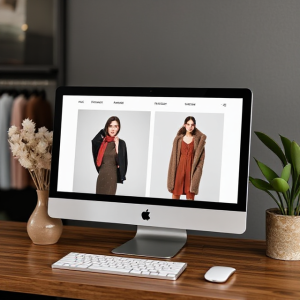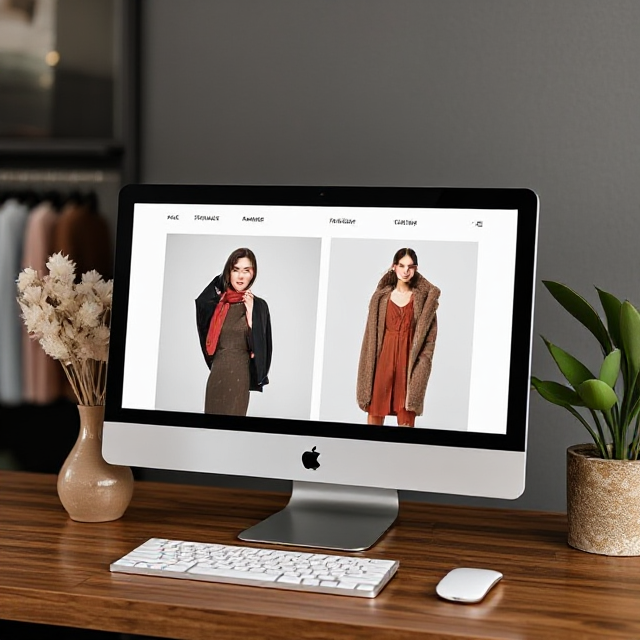
A fashion website is much more than a digital storefront. It serves as a critical tool for engaging with customers, showcasing products, and, most importantly, driving sales. To truly thrive in the competitive online fashion industry, businesses must go beyond just having an attractive website—they need a strategically optimized site that boosts user experience, conversions, and overall sales.
This guide explores essential strategies for optimizing fashion websites to maximize sales, including user experience, design, content strategy, SEO, and data-driven decision-making.
1. Focus on User Experience (UX)
User experience is one of the most crucial factors in driving sales. If users find it difficult to navigate a website or experience issues during their shopping journey, they are likely to abandon their cart and leave the site.
Key UX Elements for Fashion Websites:
- Fast Loading Speeds: Slow website loading times result in frustrated customers and abandoned carts. According to a report by Google, 53% of mobile users will leave a site if it takes more than 3 seconds to load. Compress images and optimize code to ensure your website loads quickly across all devices.
- Mobile Responsiveness: With the increasing number of mobile shoppers, a fashion website must be fully responsive. Mobile optimization ensures that users have a seamless experience regardless of the device they’re using.
- Simple Navigation: Easy-to-understand categories and a well-organized product catalog make it easier for customers to find what they are looking for. Use clear labels for categories like Men, Women, Accessories, New Arrivals, Sale, etc.
- Intuitive Search Bar: A powerful search bar that allows users to filter results by size, color, style, and price makes it easier for them to find the perfect product. Implement auto-suggestions to guide users to popular products or trending styles.
2. Effective Product Pages
The product page is the focal point of the online shopping experience. If users find it difficult to understand the product or aren’t convinced by the images, they are less likely to make a purchase.
Optimizing Product Pages:
- High-Quality Images: Fashion is all about aesthetics. High-resolution, multiple-angle product images are essential to showcasing your clothing. Include a zoom feature so customers can examine the fine details of the fabric, stitching, and fit. Consider implementing 360-degree images or videos for a better product experience.
- Detailed Product Descriptions: Write comprehensive product descriptions that not only describe the features but also the benefits. Highlight materials, sizes, fit, and care instructions, and be sure to offer styling tips that could inspire your customers.
- Size Guides: A common challenge in online fashion shopping is selecting the right size. Provide a clear and easy-to-follow size guide to help customers choose the best fit. Consider adding a fit predictor tool that suggests the best size based on previous purchases or user input.
- Customer Reviews and Ratings: Social proof is an effective way to build trust with potential customers. Include a section for user-generated reviews, and display ratings prominently on the product page to show the popularity and satisfaction levels of each item.
3. Seamless Checkout Process
The checkout process is where many fashion websites lose potential sales. A complicated or lengthy checkout can lead to cart abandonment, so it is crucial to streamline the process to minimize friction.
Optimizing the Checkout Experience:
- Guest Checkout Option: Forcing users to create an account before making a purchase can deter potential customers. Provide an option for guest checkout, and only ask for essential information to complete the purchase.
- Multiple Payment Options: Offer a variety of payment methods, including credit cards, PayPal, Apple Pay, Google Pay, and even installment payment plans like Afterpay or Klarna. The more payment options you offer, the more likely customers are to complete their purchase.
- Clear Shipping Information: Shipping costs and delivery times are significant factors in a customer’s buying decision. Clearly display shipping information before they reach the checkout page. Offering free or discounted shipping on orders over a certain amount can also incentivize larger purchases.
- Secure Payment Gateway: Ensuring that customers feel safe while entering their payment details is crucial. Display security badges and use well-known payment processors to reassure customers that their information is protected.
4. Search Engine Optimization (SEO) for Fashion Websites
SEO is critical for driving organic traffic to your fashion website. To improve visibility on search engines, your site must be optimized for both on-page and technical SEO.
SEO Tips for Fashion Websites:
- Keyword Research: Identify high-traffic keywords relevant to your fashion brand and product categories. Use tools like Google Keyword Planner, SEMrush, or Ahrefs to uncover search terms that your target audience is using. Ensure that keywords are naturally incorporated into product titles, descriptions, and meta tags.
- Optimize Product Pages for SEO: Each product page should have a unique title tag, meta description, and product description that include relevant keywords. Make sure product URLs are short and descriptive, for example, “/mens-leather-jacket” instead of “/product123.”
- Create Fresh, Engaging Content: Regularly update your website with fashion-related blog posts, trend reports, or styling guides. This not only helps with SEO but also engages visitors and encourages them to spend more time on your site.
- Image SEO: Since fashion websites rely heavily on images, optimizing them for SEO is essential. Use descriptive image alt texts, compress image files for faster loading, and ensure that images are properly tagged with keywords.
- Link Building: Earn high-quality backlinks from reputable fashion blogs, influencers, and fashion websites. Backlinks signal to search engines that your site is credible, which can improve your rankings.
5. Leverage Social Media and Influencer Marketing
Fashion is inherently visual, which makes social media platforms like Instagram, Pinterest, and TikTok ideal for promoting your products.
Strategies for Social Media Integration:
- Social Proof: Showcase user-generated content, such as photos of customers wearing your clothing, to create a sense of community and authenticity. Feature these images on product pages, social media, and in email marketing.
- Influencer Partnerships: Collaborate with fashion influencers who align with your brand values and target audience. Influencers can help amplify your reach and promote products through their established follower base.
- Social Commerce: Enable social commerce features on platforms like Instagram and Facebook. This allows customers to shop directly through your social media posts without leaving the app.
- Retargeting Ads: Use retargeting ads on social media platforms to bring back visitors who have previously visited your website but didn’t make a purchase. These ads can feature products they viewed, creating a sense of urgency or interest.
6. Data-Driven Optimization
Data analytics plays a vital role in understanding your customers’ behavior and optimizing your website for conversions.
Key Metrics to Track:
- Bounce Rate: A high bounce rate can indicate issues with your website’s design or content. Use tools like Google Analytics to track where users are dropping off and identify areas for improvement.
- Conversion Rate Optimization (CRO): Continuously test and tweak elements of your website to improve conversion rates. Use A/B testing for different page designs, CTAs (calls-to-action), and product layouts to determine what works best.
- Abandoned Cart Analysis: Track abandoned cart rates and implement retargeting strategies such as sending reminder emails, offering discounts, or providing limited-time offers to recover those lost sales.
- Heatmaps: Use heatmaps to visualize where users are clicking and how they are navigating your site. This insight can help you identify popular products, problem areas, and design opportunities.
Optimizing a fashion website for sales requires a combination of user-centered design, SEO, marketing strategies, and data analysis. By focusing on delivering a smooth user experience, offering compelling product pages, optimizing for search engines, and utilizing social proof, you can create a website that not only attracts visitors but also converts them into loyal customers. Remember that optimization is an ongoing process, so regularly assess your website’s performance and adapt to changing trends and consumer preferences to stay competitive in the ever-evolving fashion industry.
